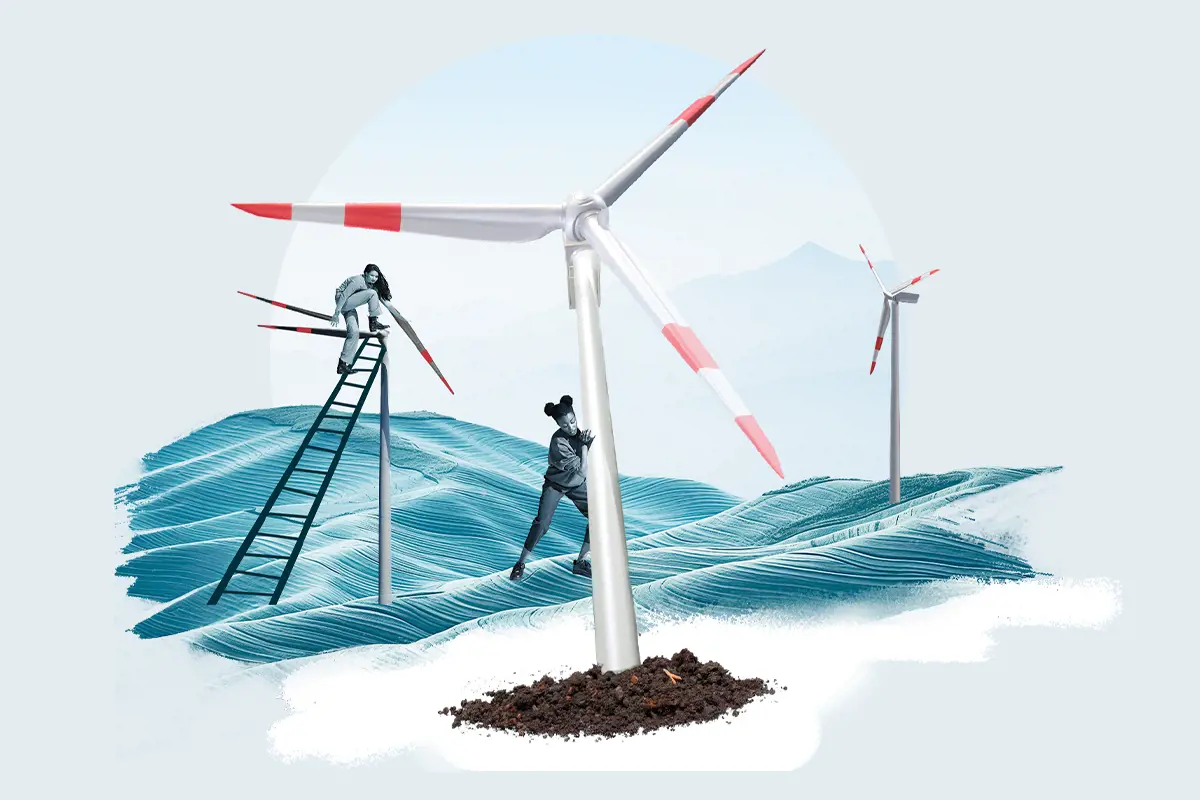
Towards a more "normal" yield curve
"The process of getting inflation back down to 2% has a long way to go", declared Federal Reserve Chairman J. Powell last June; "we cannot declare victory yet", echoed his European counterpart Christine Lagarde a few weeks later. Despite the steady decline in inflation, the message hammered home by central banks on both sides of the Atlantic has hardly changed for many months: rates will remain high "for long". Even though central bankers have not really changed their tone, over the last weeks market operators have sharply revised their interest rate expectations: they now expect key rates to be cut on both sides of the Atlantic as soon as early spring. Looking further ahead, however, they remain very cautious and expect key rates to be slightly below 4% in the US and slightly above 2.5% in the Eurozone by the end of 2027. Are these expectations reasonable?
Recent monetary history as a guide...
Before their recent revision of expectations, markets seemed to have had blind faith in the commitments of central bankers. Yet, as monetary history regularly reminds us, central bankers cannot reasonably make promises that extend beyond a few months. When, in August 2003, the Federal Reserve pledged to maintain an accommodative monetary policy for a "considerable period of time”, many wondered about the horizon of this promise. Would it be a few months, several quarters, or even years? Five months later, these words were cleverly removed from the monetary policy statement to prepare the markets for the next rate hike... which will actually take place at the end of June 2004. The "considerable period" thus lasted "only" ten months. The promise made in March 2009 to keep interest rates low for an "extended period" will take much longer, but the devastation caused by the Great Financial Crisis was of an unprecedented scale. In August 2011, the "extended period" will be extended "at least until mid-2013" and then "until mid-2015". The Fed will not raise rates until January 2016. This time, the central bank will have kept rates low for... seven years. This brief review shows that the period associated with the qualifiers "considerable", "extensive" or "long" is, to say the least, variable. The safest thing for central banks to do is to make vague conditional promises, such as the one made by the ECB President at the end of August: the central bank will keep rates high "for as long as needed"!
Anchoring inflation expectations
Minutely parsing central bank speeches in an attempt to read future monetary policy into them several quarters in advance is therefore futile. Better to ask what conditions might lead central banks to loosen their monetary policy. Their objective today is to bring inflation back towards their 2% target, which in both Europe and the United States requires an easing of tensions on the labor market. In the absence of a shock that would tip economies into recession, this means that growth must slow below its potential pace for a year or two. Of course, no one knows exactly what this cruising speed is, but for central banks to consider a less restrictive monetary policy, the pace of growth will probably have to fall below 1.5% in the United States in 2024 and 0.5% in the Eurozone. Once this condition has been met, monetary policy could become less "restrictive". Here again, however, judging the "normal" level of central bank rates is far from easy. This level varies over time, depending in particular on economic agents' inflation expectations. The degree of restraint associated with a nominal rate of 4% is not the same depending on whether inflation over the next few years is expected to be 2%... or 4%! If central banks do indeed succeed in bringing inflation back to target, a nominal short rate of around 3.5% in the United States would not seem unreasonable; in Europe, it would probably be closer to 2.5%. From this point of view, the downward revision of market expectations since early November seems to be moving in the right direction, even if those expectations still overlook the risk of a recession in the next few years.
Deflating balance sheets
There is one final argument in favor of lower short-term rates in the medium term. Since the "Great Financial Crisis", central bank balance sheets have played a very special role in the conduct of monetary policy. Both the Federal Reserve and the ECB have resorted to quantitative easing policies which have led to an explosion in the size of their balance sheets, from less than 1 trillion (in national currencies) at the beginning of 2005 to almost 9 trillion at the beginning of 2022. Each at their own pace, they are now trying to reduce their balance sheets. The economic situation indeed no longer justifies the implementation of unconventional policies. The political argument is not without importance, either. If central banks can make losses and operate with negative equity, a balance sheet lightened of securities bought yesterday at high prices would facilitate their return to profitability. It would also help central banks reaffirm their independence. Finally, in the case of the ECB, the legal aspect is also important: the 2018 ruling by the Court of Justice of the European Union on the legality of the PSPP (Public Sector Purchase Programme) underlines the temporary nature of quantitative easing programs, which does not oblige the ECB to reduce the size of its securities portfolio, but does force it a minima to explain how it helps it achieve its price stability objective... Whatever the reason, the ongoing? reduction of central bank balance sheets - sometimes referred to as "quantitative tightening" - will push up term premiums[1] and, all other things being equal, call for lower short-term rates. All in all, the deflation of balance sheets will signal a normalization of monetary policy: after being flat, or even inverted, for several years, the yield curve will finally be able to return to a normal shape!
This communication is provided for information purposes only, it does not constitute an offer to buy or sell financial instruments, nor does it represent an investment recommendation or confirm any kind of transaction, except where expressly agreed. Although Candriam selects carefully the data and sources within this document, errors or omissions cannot be excluded a priori. Candriam cannot be held liable for any direct or indirect losses as a result of the use of this document. The intellectual property rights of Candriam must be respected at all times, contents of this document may not be reproduced without prior written approval.
[1] The term premium is the additional yield demanded by investors to compensate for the uncertainty associated with holding long-term securities.











